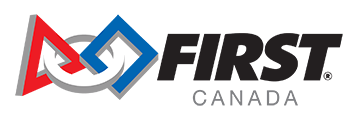The small, Lego robot named Super pitched a ball into a net. It mastered five obstacles to retrieve seven rings and hang them on a bar. It opened a door. It pushed, pulled, flipped and spun levers.
Super was designed, built and programmed by kids in Grades 4 to 8. It could be Windsor’s future.
When they reach high school, these kids will build big robots – five feet tall and 120 pounds – that can play basketball and soccer, throw Frisbees and climb.
And when they graduate from high school, studies show those kids will be far more likely to train in skilled trades or study the critical STEM subjects: science, technology, engineering and math.
Then, highly skilled and highly paid, they could fuel an innovative economy that will drive Windsor’s future.
“Here, at this early level with robotics, is where it all starts,” says Michael Solcz Jr., vice-president of Valiant Machine and Tool, one of Windsor’s most successful companies and one of the biggest sponsors of FIRST Robotics, the international program that has exploded in Windsor.
“It really represents a lot of what Windsor needs,” said Larry Koscielski, senior technical and strategic advisor at CenterLine, another major Windsor company and another major sponsor of FIRST Robotics.
“We just hope some of these kids end up on our doorstep,” Solcz said.
Two years ago, Windsor and Essex County had one elementary school robotics team and one high school team. Now, we have 24 elementary teams and 13 high school teams. We’ve sent three high school teams to the world championships.
Windsor hosted a regional tournament for elementary teams last weekend. And we’re one of only seven cities in Canada that hosts an annual regional tournament for high school teams. Forty-eight teams with more than 1,500 students, including a group from California, have registered for the tournament in April.
American entrepreneur Dean Kamen, who invented the Segway, insulin pump and portable dialysis machine, started FIRST Robotics to encourage students to pursue careers in science, engineering and technology. The acronym FIRST means For Inspiration and Recognition of Science and Technology.
The younger kids build robots that must complete 10 “missions” in two and a half minutes on a four-foot by eight-foot table. It’s called the First Lego League. The older kids build robots that weigh as much as 120 pounds and compete in a “sport” in an arena. Teams receive their instructions in January and have six weeks to design, build and program their robots.
But it’s a lot more than robotics. Each team is run like a company. Members take on roles like writing a business plan, accounting, graphic design, marketing and public relations. They learn life skills like solving problems, teamwork, communication and handling challenges and setbacks.
They’re guided by mentors – real engineers, programmers and skilled workers. Valiant sponsors and mentors a team from Belle River District High School. The company shelled out $50,000 for the first regional tournament here last year. CenterLine sponsors and mentors a team of employees’ kids in the First Lego League. They work in one of the plants, down the hall from massive, multimillion-dollar robots. It also sponsors the Sandwich Sabre Bytes; it has even helped them machine parts. It also contributed $25,000 to the tournament last year. Chrysler, Reko, NARMCO and Unconquered Sun have all helped fund and mentor teams. Several teams demonstrated their robots for senior executives at Chrysler’s headquarters in Auburn Hills two years ago.
Valiant and CenterLine have even hired high school graduates from the program to train in skilled trades. Both the University of Windsor and St. Clair College also sponsor and mentor teams and offer scholarships to participants.
Half of all Fortune 500 companies support FIRST Robotics, including Boeing, Bombardier and Google. CEOs and executives recruit kids and offer scholarships at the world championships in St. Louis, which draw 30,000 participants and spectators.
Michigan Gov. Rick Snyder, who has gone to the state finals twice, supports the program so much that he talked about it in his State-of-the-State address this year. Michigan needs more youth to go into science, technology, engineering and math, he said, “and one of the greatest tools we’ve found is … FIRST Robotics.”
Michigan has more teams than any other state, and the first student robotics centre, at Kettering University.
“It took me half a second to understand the importance of the program to Windsor,” he said., director of robotics and youth programs at WEtech Alliance, which is promoting FIRST Robotics here, first saw a video of the Sandwich Bytes on YouTube.
He went to a tournament and “I was blown away,” he said. Being in the pit where teams tweak and repair their robots between matches “was like being in the pits at NASCAR or Formula 1,” he said.
“What we are trying to build here … is a talent development pipeline like they have in the NHL,” said Kusmierczyk, the Ward 7 city councillor. “Windsor is the perfect location … because of our history of automation.”
He points to a company called Clearpath Robotics in Kitchener. The three founders were on the University of Waterloo robotics team. They started the company while they were students. Now they have clients like the Canadian Space Agency, NASA and MIT.
“It’s education, but really it’s long term economic development,” said Kusmierczyk.
Mackenzie Parks is one of the kids who built Super. He’s in Grade 7 at Stella Maris Elementary School in Amherstburg.
“I get to program the robots. I have to figure out how to make the robot function, think of all the variables,” he said.
What does Mackenzie want to be?
“I’d like to be a mechanical engineer,” he said.
Click here to see the original article.
